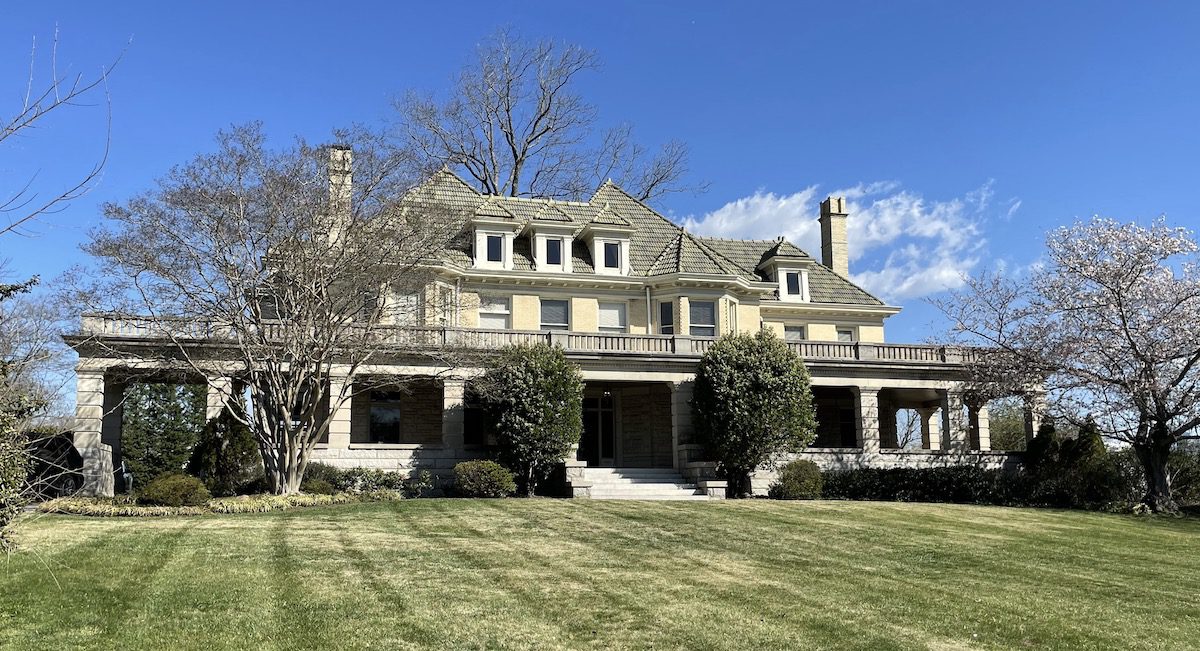When a Durham commission discussed the mundane details for a new clubhouse — including whether it could have vinyl window frames — the real focus was on an old house at the top of a nearby hill. That house, the Greystone Inn, is listed in the National Register of Historic Places, and is included in the local Morehead Hill Historic District. Under a Durham ordinance, any time someone wants to build within a local historic district, they need a “certificate of appropriateness.” Enter the Durham Historic Preservation Commission.
The commission must approve proposed changes to make sure they match the character of nearby historic buildings.
In early March, at the group’s most recent meeting, members discussed plans for a vacant lot down the hill from the Inn.

The proposed project for the lot, the Elm Hill Townhomes, first appeared before the commission two years ago. The plan included 11 residential buildings and a clubhouse. After ensuring that everything from the buildings’ siding to the trees on the property posed no threat to the Greystone Inn’s architectural character, the board unanimously approved the project.
But there were additional details to fret about, so the project was back on the March 7 agenda. It was a reminder of how the Historic Preservation Commission worries about little things: The meeting focused solely on a request to add an extra floor to the clubhouse, which led to discussions about shingles, window models, and landscaping.
The commission assembled in a small committee room at City Hall at 9 a.m., and Chair Andy Goolsby called the meeting to order.
After roll call, the group turned to the main item on the agenda: the vacant lot.
Linda Lavis, the project manager, rose to present the amended clubhouse plan. She scrolled through a presentation, explaining the front and side views of the two-story building. Lavis discussed the materials (insulated wood doors, cement trim, board and batten siding) and listed the building’s potential spaces (fitness room, yoga studio, offices). After five minutes and more than 10 pages of drawings, Lavis said, “That’s the extent of it. It’s a pretty small, simple building.”
Simple, sure. But the commission had no shortage of detailed questions.
First, Gooslby clarified the kind of asphalt shingles on the clubhouse roof. Lavis handled that one easily, but the next question caused more of a stir.
Goolsby had noticed an issue with the clubhouse windows. While the original plan used Sierra Pacific windows, an approved variety, the amended plan included Plygem Vinyl windows, a kind of “hollow profile” material explicitly prohibited in the Historic Properties Local Review Criteria.
When Lavis said she couldn’t find the rule about hollow profile windows, member April Johnson was prepared with its exact location: “It’s under ‘Non-Contributing, Section B: New Structures,’ and then go down to number 4, and the rule is in part B.”
(Johnson expanded on the rule in a phone call after the meeting: “Vinyl is not a material that’s in harmony with the historic materials, look or design of Durham’s historic districts.”)
The commission ultimately required that Lavis switch to an approved material for the clubhouse windows.
Commission members are comfortable sweating the details about vinyl and other building materials because many are architects, urban planners, or historians. “The commission is made up of people who have an interest in historic preservation one way or another, so we do get a little passionate,” Johnson told The 9th Street Journal. “We really care about how things look.”
Although commission members made no mention of the Greystone Inn during their discussion, the old building seemed to loom large in their deliberations. They moved ahead only when they were sure the additional floor on the clubhouse was not a threat to the Inn’s historic charm.
After a few more questions about the landscaping, Goolsby entertained a motion to approve the application, with the condition that the window material be changed. The motion passed unanimously.
Above: The Greystone Inn loomed over the conversation during a recent meeting of the Durham Historic Preservation Commission. Photo by Nina Moske — The 9th Street Journal



